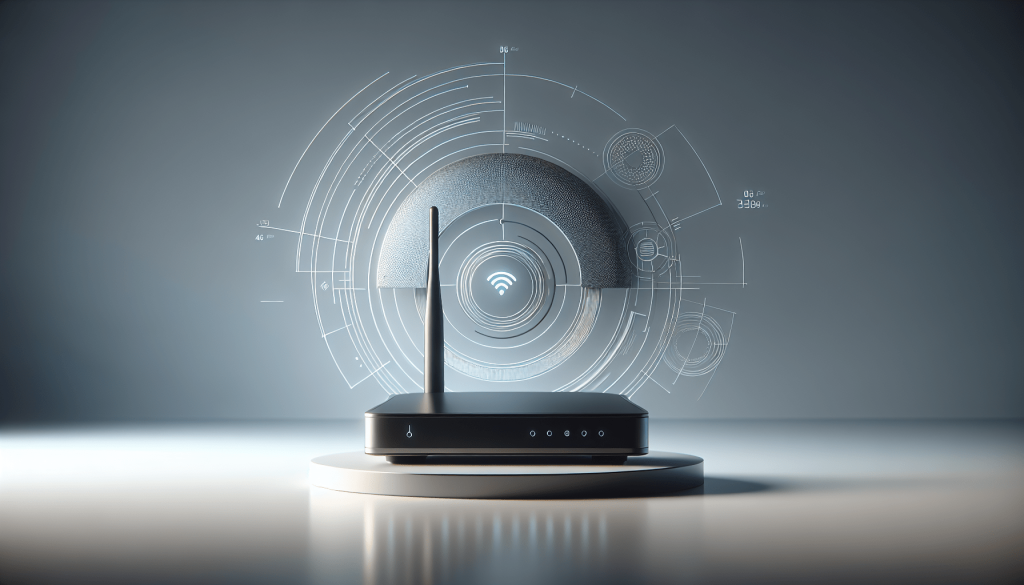So, you’re looking to access your router’s settings and configuration, but not quite sure how to go about it? Well, fret not! In this guide, we’ll walk you through the step-by-step process of accessing your router’s settings and configuration, allowing you to make necessary adjustments and optimizations for a smoother internet experience. From finding your router’s IP address to logging in and exploring the various options available, you’ll soon be navigating your router like a pro. Get ready to take control of your network!
Guide to Accessing Your Router’s Settings and Configuration
Welcome to this comprehensive guide on how to access and configure your router’s settings. In this article, we will walk you through the process of connecting to your router, finding its IP address, accessing its configuration via a web browser, and exploring various settings and options available to you. Whether you are looking to set up a wireless network, secure your connection, or troubleshoot common issues, this guide has got you covered.
1. Connecting to Your Router
1.1. Wired Connection
To connect to your router using a wired connection, simply plug one end of an Ethernet cable into your computer and the other end into one of the LAN ports on the back of your router. This ensures a stable and reliable connection.
1.2. Wireless Connection
To connect to your router wirelessly, access your device’s Wi-Fi settings and search for available networks. Locate your router’s network name (SSID) in the list and select it. Enter the password when prompted to establish a secure wireless connection.
2. Finding Your Router’s IP Address
2.1. Windows
To find your router’s IP address on a Windows device, press the Windows key + R to open the Run dialog box. Type “cmd” and hit Enter to open the Command Prompt. In the Command Prompt, type “ipconfig” and press Enter. Look for the Default Gateway under the Ethernet or Wi-Fi section. The IP address displayed is your router’s IP address.
2.2. Mac
On a Mac, click the Apple menu in the top-left corner and select “System Preferences.” Click on the “Network” icon and select the network connection you are using (Ethernet or Wi-Fi) from the list on the left. Click the “Advanced” button, then navigate to the TCP/IP tab. The IP address listed next to “Router” is your router’s IP address.
2.3. Linux
In Linux, open the Terminal and type “ip route | grep default”. The IP address displayed next to “default via” is your router’s IP address.

3. Accessing Router’s Configuration via Web Browser
3.1. Opening a Web Browser
Open your preferred web browser, such as Chrome, Firefox, or Safari.
3.2. Entering the IP Address
In the address bar of your web browser, type your router’s IP address that you obtained in the previous step and press Enter. This will take you to your router’s login page.
3.3. Login Credentials
Enter the username and password for your router. If you haven’t changed these from the default settings, consult the next section to find the default login details. Once entered, click “Login” to access the router’s administration panel.
4. Default Router Login Details
4.1. Usernames
Most routers use common default usernames such as “admin,” “root,” or “user.” However, it is important to note that these default credentials may vary depending on the router manufacturer and model. It is recommended to consult the router’s manual or the manufacturer’s website for the correct default username.
4.2. Passwords
Similarly, the default passwords for routers can also vary. Common default passwords include “admin,” “password,” or leaving the field blank. Again, referring to the router’s manual or the manufacturer’s website will provide accurate information on the default password.

5. Resetting Router Login Details
5.1. Physical Reset
If you have forgotten your router’s login credentials or if they have been changed by someone else, you can perform a physical reset to restore the router to its factory defaults. Locate the reset button on your router, usually found on the back or bottom. Using a small object like a paperclip, press and hold the reset button for about 10 seconds until the router restarts.
5.2. Software Reset
Alternatively, some routers offer the option to perform a software reset through the administration panel. Check your router’s user manual or the manufacturer’s website for instructions specific to your model. This method allows you to reset the login details without physically accessing the router.
6. Router Administration Panel
Once you have successfully logged into your router’s administration panel, you will have access to various settings and options to customize your network configuration. Let’s explore some of the key sections you might encounter.
6.1. Dashboard
The dashboard provides an overview of your router’s status, including network connection status, number of connected devices, and any important notifications or updates.
6.2. Overview
The overview section typically displays a summary of your network settings, such as IP address allocation, DNS settings, and network protocols. This is where you can review and modify basic network configurations.
6.3. Settings
Under the settings section, you will find a range of options to adjust and configure specific router features. These may include wireless settings, LAN and WAN settings, advanced settings, and more. Let’s dive into some of these settings in the following sections.
7. Wireless Settings
7.1. SSID and Network Name
Set your wireless network name (SSID) to easily identify and connect to your network from devices. You can also enable or disable broadcasting the network name to enhance security.
7.2. Password and Security
Protect your wireless network by setting a strong password. Choose a combination of letters, numbers, and special characters. Select the appropriate security protocol (WPA2 is recommended) to ensure a secure wireless connection.
7.3. Guest Network
If your router supports guest networks, you can create a separate Wi-Fi network to provide internet access to guests without compromising the security of your main network.
7.4. Channel Selection
Selecting an appropriate channel for your wireless network can help minimize interference from other nearby wireless networks. Experiment with different channels to find the one with the least interference.
8. LAN and WAN Settings
8.1. LAN IP Address
Configure the local IP address for your router within your home network. This address is used to access the router’s administration panel and can be modified if necessary.
8.2. DHCP and Static IP
Determine whether your router should automatically assign IP addresses to devices connected to the network through DHCP, or if you prefer to configure specific devices with static IP addresses.
8.3. Port Forwarding
If you need to access specific services or applications from external networks, port forwarding allows you to redirect incoming traffic from a specific port to a particular device on your local network.
8.4. Dynamic DNS
Dynamic DNS allows you to associate a domain name with your router’s IP address, making it easier to access your home network remotely even if your IP address changes.
9. Advanced Settings
9.1. Firewall Configuration
Adjusting the router’s firewall settings can enhance the security of your network by blocking unauthorized access and protecting against potential threats.
9.2. QoS and Bandwidth Control
Quality of Service (QoS) settings allow you to prioritize certain types of network traffic, ensuring a smoother experience for bandwidth-intensive activities such as streaming or online gaming.
9.3. VPN Setup
If you require a secure connection to access your network remotely, your router might offer VPN (Virtual Private Network) support. Set up and configure a VPN to encrypt the traffic between your device and the home network.
9.4. Firmware Update
Regularly updating your router’s firmware ensures it has the latest features, performance improvements, and security patches. Check for firmware updates on the manufacturer’s website and follow the instructions to install them.
10. Troubleshooting and FAQ
10.1. Common Router Issues
In this section, we will address common router issues such as slow internet connection, Wi-Fi signal dropouts, and connectivity problems. Troubleshooting steps and solutions will be provided to help you resolve these issues effectively.
10.2. Resetting Router to Factory Defaults
If all else fails, you can reset your router to its factory defaults to eliminate any configuration issues or conflicts that may be causing problems. Follow the instructions provided earlier in this guide on how to perform both a physical and software reset.
10.3. Contacting Customer Support
If you require further assistance or encounter issues beyond your expertise, you can contact the customer support of your router’s manufacturer. They have specialized technical teams who can guide you through troubleshooting steps or provide additional help and advice.
In conclusion, accessing and configuring your router’s settings is vital to ensure optimal network performance and security. By following this comprehensive guide, you can confidently navigate your router’s administration panel, customize settings according to your preferences, and troubleshoot any issues that may arise. Remember to always consult your router’s manual or the manufacturer’s website for detailed instructions specific to your model. Happy configuring!
